Fish Species Database - Complete Guide to Freshwater, Saltwater & Brackish Fish
Feel free to browse all fish species that can be legally caught. If you find any errors or want to add a species, let us know!
Showing results 201-220 of 227

Talang Queenfish
Scomberoides commersonnianus
Physical Characteristics
Length 70 cm (avg) / 120 cm (max)
Weight 5 kg (avg) / 21 kg (max)
Habitat & Geography
Bodies of water:
Common Regions:
Behavior & Diet
Primary Diet:
Angling Information
Best Baits / Lures:
Methods & Techniques:
Best Fishing Season:
Classification:
Phylum: Chordata (Chordate)
Class: Ray-finned fish
Order: Carangiformes
Family: Jacks
Brief description
A large, predatory carangid found in Indo-West Pacific waters. Known for its elongated body, silver coloration with dark spots, and strong fighting ability. Inhabits coastal waters, reefs, and occasionally enters estuaries.
Community Posts
Number of imageposts of this species: 0
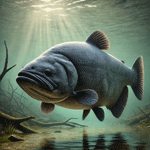
Tambaqui
Colossoma macropomum
Physical Characteristics
Length 70 cm (avg) / 100 cm (max)
Weight 10 kg (avg) / 30 kg (max)
Habitat & Geography
Bodies of water:
Common Regions:
Behavior & Diet
Primary Diet:
Angling Information
Best Baits / Lures:
Methods & Techniques:
Best Fishing Season:
Classification:
Phylum: Chordata (Chordate)
Class: Ray-finned fish
Order: Characiformes
Family: Serrasalmidae
Brief description
A large, omnivorous fish found in South America, popular in local fisheries and aquaculture.
Community Posts
Number of imageposts of this species: 0
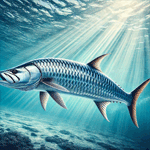
Tarpon
Megalops atlanticus
Physical Characteristics
Length 120 cm (avg) / 240 cm (max)
Weight 40 kg (avg) / 129 kg (max)
Habitat & Geography
Bodies of water:
Common Regions:
Behavior & Diet
Primary Diet:
Angling Information
Best Baits / Lures:
Methods & Techniques:
Best Fishing Season:
Classification:
Phylum: Chordata (Chordate)
Class: Ray-finned fish
Order: Elopiformes
Family: Megalopidae
Brief description
A large, iconic game fish native to the Western Atlantic (Gulf of Mexico, Caribbean, U.S. East Coast). Known for its spectacular aerial acrobatics when hooked and its ability to breathe air. Found in coastal waters, estuaries, and lagoons.
Community Posts
Number of imageposts of this species: 0

Tench
Tinca tinca
Physical Characteristics
Length 30 cm (avg) / 70 cm (max)
Weight 1 kg (avg) / 7.5 kg (max)
Habitat & Geography
Bodies of water:
Common Regions:
Behavior & Diet
Primary Diet:
Angling Information
Best Baits / Lures:
Methods & Techniques:
Best Fishing Season:
Classification:
Phylum: Chordata (Chordate)
Class: Ray-finned fish
Order: Carp-like fish
Family: Carps and minnows
Brief description
Recognizable by its olive-green coloration and smooth skin, it’s often found in still waters.
Community Posts
Number of imageposts of this species: 0
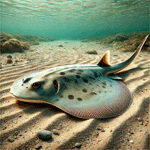
Thornback Ray
Raja clavata
Physical Characteristics
Length 60 cm (avg) / 120 cm (max)
Weight 4 kg (avg) / 18 kg (max)
Habitat & Geography
Bodies of water:
Common Regions:
Behavior & Diet
Primary Diet:
Angling Information
Best Baits / Lures:
Methods & Techniques:
Best Fishing Season:
Classification:
Phylum: Chordata (Chordate)
Class: Cartilaginous fish
Order: Rajiformes
Family: Rajidae
Brief description
A common species of skate found in the Northeast Atlantic and Mediterranean. Identified by the numerous thorny spines on its back and tail. A bottom-dweller that feeds on crustaceans, mollusks, and small fish.
Community Posts
Number of imageposts of this species: 0
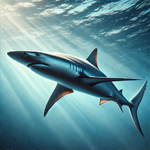
Thresher Shark
Alopias vulpinus
Physical Characteristics
Length 300 cm (avg) / 610 cm (max)
Weight 150 kg (avg) / 507 kg (max)
Habitat & Geography
Bodies of water:
Common Regions:
Behavior & Diet
Primary Diet:
Angling Information
Best Baits / Lures:
Methods & Techniques:
Best Fishing Season:
Classification:
Phylum: Chordata (Chordate)
Class: Cartilaginous fish
Order: Lamniformes
Family: Alopiidae
Brief description
A distinctive shark species known for its extremely long upper tail lobe, which it uses like a whip to herd and stun schooling fish like sardines and mackerel. Prefers deep offshore waters but occasionally comes near coastlines.
Community Posts
Number of imageposts of this species: 0
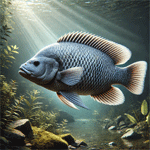
Tilapia
Oreochromis spp.
Physical Characteristics
Length 25 cm (avg) / 60 cm (max)
Weight 0.4 kg (avg) / 5 kg (max)
Habitat & Geography
Bodies of water:
Common Regions:
Behavior & Diet
Primary Diet:
Angling Information
Best Baits / Lures:
Methods & Techniques:
Best Fishing Season:
Classification:
Phylum: Chordata (Chordate)
Class: Ray-finned fish
Order: Perch-like fish
Family: Cichlids
Brief description
A hardy and fast-growing fish widely farmed for its mild flavor and high protein content.
Community Posts
Number of imageposts of this species: 0

Vermilion Snapper
Rhomboplites aurorubens
Physical Characteristics
Length 30 cm (avg) / 60 cm (max)
Weight 0.9 kg (avg) / 3.2 kg (max)
Habitat & Geography
Bodies of water:
Common Regions:
Behavior & Diet
Primary Diet:
Angling Information
Best Baits / Lures:
Methods & Techniques:
Best Fishing Season:
Classification:
Phylum: Chordata (Chordate)
Class: Ray-finned fish
Order: Perch-like fish
Family: Lutjanidae
Brief description
A deep-water snapper species found on offshore reefs and structures of the western Atlantic. Prized for its bright red color and excellent flavor. Typically schools over rocky bottoms on the continental shelf and slope.
Community Posts
Number of imageposts of this species: 0

Volga Pikeperch
Sander volgensis
Physical Characteristics
Length 35 cm (avg) / 45 cm (max)
Weight 0.6 kg (avg) / 1.2 kg (max)
Habitat & Geography
Bodies of water:
Common Regions:
Behavior & Diet
Primary Diet:
Angling Information
Best Baits / Lures:
Methods & Techniques:
Best Fishing Season:
Classification:
Phylum: Chordata (Chordate)
Class: Ray-finned fish
Order: Perch-like fish
Family: Perches
Brief description
A Eurasian pikeperch species inhabiting large rivers and lakes with slow current and sandy or muddy bottoms. Smaller than its relative the zander (Sander lucioperca), it preys on small fish and invertebrates. Valued as a food and sport fish throughout its native range in Eastern Europe and Asia.
Community Posts
Number of imageposts of this species: 0
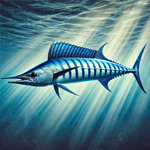
Wahoo
Acanthocybium solandri
Physical Characteristics
Length 120 cm (avg) / 250 cm (max)
Weight 20 kg (avg) / 83 kg (max)
Habitat & Geography
Bodies of water:
Common Regions:
Behavior & Diet
Primary Diet:
Angling Information
Best Baits / Lures:
Methods & Techniques:
Best Fishing Season:
Classification:
Phylum: Chordata (Chordate)
Class: Ray-finned fish
Order: Scombriformes
Family: Mackerels and tunas
Brief description
One of the fastest fish in the ocean, known for its incredible speed and importance in sport fishing. A solitary pelagic predator found in tropical and subtropical seas worldwide. Prized for its high-quality, firm white flesh.
Community Posts
Number of imageposts of this species: 0
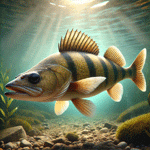
Walleye
Sander vitreus
Physical Characteristics
Length 45 cm (avg) / 107 cm (max)
Weight 1.5 kg (avg) / 11.3 kg (max)
Habitat & Geography
Bodies of water:
Common Regions:
Behavior & Diet
Primary Diet:
Angling Information
Best Baits / Lures:
Methods & Techniques:
Best Fishing Season:
Classification:
Phylum: Chordata (Chordate)
Class: Ray-finned fish
Order: Perch-like fish
Family: Perches
Brief description
The Walleye is a prized North American freshwater game fish, known for its excellent taste and nocturnal feeding habits. Its large, reflective eyes help it hunt in low light, especially in lakes and rivers with turbid waters. Formerly classified as Stizostedion vitreum, it spawns in spring and thrives in cooler, deeper habitats.
Community Posts
Number of imageposts of this species: 0

Wels / European Catfish
Silurus glanis
Physical Characteristics
Length 150 cm (avg) / 270 cm (max)
Weight 30 kg (avg) / 144 kg (max)
Habitat & Geography
Bodies of water:
Common Regions:
Behavior & Diet
Primary Diet:
Angling Information
Best Baits / Lures:
Methods & Techniques:
Best Fishing Season:
Classification:
Phylum: Chordata (Chordate)
Class: Ray-finned fish
Order: Catfish
Family: Siluridae
Brief description
One of the largest freshwater fish in Europe, known for its long body and voracious appetite.
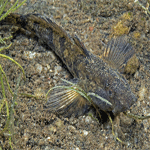
Western Tubenose Goby
Proterorhinus semilunaris
Physical Characteristics
Length 8 cm (avg) / 12 cm (max)
Weight 0.015 kg (avg) / 0.03 kg (max)
Habitat & Geography
Bodies of water:
Common Regions:
Behavior & Diet
Primary Diet:
Angling Information
Best Baits / Lures:
Methods & Techniques:
Best Fishing Season:
Classification:
Phylum: Chordata (Chordate)
Class: Ray-finned fish
Order: Gobiiformes
Family: Gobiidae
Brief description
A small benthic goby species native to freshwater and brackish habitats in Europe. Characterized by its fused nasal flaps forming a distinctive tube-like structure. Prefers shallow waters with sandy or rocky substrates and abundant vegetation. Nocturnal and bottom-dwelling, it feeds on small invertebrates. Can tolerate brackish conditions and has become invasive in some regions outside its native range.
Community Posts
Number of imageposts of this species: 0

White Bass
Morone chrysops
Physical Characteristics
Length 30 cm (avg) / 45 cm (max)
Weight 0.6 kg (avg) / 3 kg (max)
Habitat & Geography
Bodies of water:
Common Regions:
Behavior & Diet
Primary Diet:
Angling Information
Best Baits / Lures:
Methods & Techniques:
Best Fishing Season:
Classification:
Phylum: Chordata (Chordate)
Class: Ray-finned fish
Order: Perch-like fish
Family: Moronidae
Brief description
A strong fighter on the line, this fish is known for its distinctive stripes.
Community Posts
Number of imageposts of this species: 0

White Bream
Blicca bjoerkna
Physical Characteristics
Length 25 cm (avg) / 41 cm (max)
Weight 0.4 kg (avg) / 1.35 kg (max)
Habitat & Geography
Bodies of water:
Common Regions:
Behavior & Diet
Primary Diet:
Angling Information
Best Baits / Lures:
Methods & Techniques:
Best Fishing Season:
Classification:
Phylum: Chordata (Chordate)
Class: Ray-finned fish
Order: Carp-like fish
Family: Carps and minnows
Brief description
A freshwater cyprinid fish widespread across Europe and parts of Asia. Inhabits still or slow-flowing waters such as lakes, ponds, and backwaters. Often found in turbid, nutrient-rich waters with soft bottoms. Characterized by its silvery-white body, deep compressed shape, and reddish pelvic fins. Forms large schools and feeds on bottom invertebrates, plant matter, and detritus.
Community Posts
Number of imageposts of this species: 0

White Catfish
Ameiurus catus
Physical Characteristics
Length 40 cm (avg) / 69 cm (max)
Weight 1 kg (avg) / 4.9 kg (max)
Habitat & Geography
Bodies of water:
Common Regions:
Behavior & Diet
Primary Diet:
Angling Information
Best Baits / Lures:
Methods & Techniques:
Best Fishing Season:
Classification:
Phylum: Chordata (Chordate)
Class: Ray-finned fish
Order: Catfish
Family: North American catfish
Brief description
A smaller, yet resilient catfish species often found in slow-moving waters.
Community Posts
Number of imageposts of this species: 0
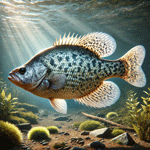
White Crappie
Pomoxis annularis
Physical Characteristics
Length 25 cm (avg) / 53 cm (max)
Weight 0.5 kg (avg) / 2.4 kg (max)
Habitat & Geography
Bodies of water:
Common Regions:
Behavior & Diet
Primary Diet:
Angling Information
Best Baits / Lures:
Methods & Techniques:
Best Fishing Season:
Classification:
Phylum: Chordata (Chordate)
Class: Ray-finned fish
Order: Perch-like fish
Family: Sunfish
Brief description
The White Crappie is a freshwater fish native to North America, recognized by its silvery body with 5–10 vertical dark bars and a slightly elongated shape. It prefers slow-moving or still waters such as lakes, reservoirs, and turbid backwaters. Adults feed primarily on small forage fish like shad, while juveniles consume insects and microcrustaceans. It is a popular gamefish due to its schooling behavior and seasonal spawning runs. Breeding males darken significantly, with nearly black heads and breasts.
Community Posts
Number of imageposts of this species: 0
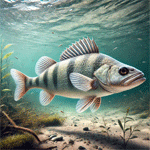
White Perch
Morone americana
Physical Characteristics
Length 20 cm (avg) / 49 cm (max)
Weight 0.3 kg (avg) / 1.4 kg (max)
Habitat & Geography
Bodies of water:
Common Regions:
Behavior & Diet
Primary Diet:
Angling Information
Best Baits / Lures:
Methods & Techniques:
Best Fishing Season:
Classification:
Phylum: Chordata (Chordate)
Class: Ray-finned fish
Order: Perch-like fish
Family: Moronidae
Brief description
A freshwater fish often found in North American lakes and rivers, appreciated for its mild flavor.
Community Posts
Number of imageposts of this species: 0
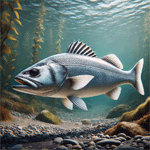
White Seabass
Atractoscion nobilis
Physical Characteristics
Length 80 cm (avg) / 166 cm (max)
Weight 8 kg (avg) / 41.3 kg (max)
Habitat & Geography
Bodies of water:
Common Regions:
Behavior & Diet
Primary Diet:
Angling Information
Best Baits / Lures:
Methods & Techniques:
Best Fishing Season:
Classification:
Phylum: Chordata (Chordate)
Class: Ray-finned fish
Order: Perch-like fish
Family: Sciaenidae
Brief description
The White Seabass is a highly prized game fish found along the Pacific coast of North America. It is the largest member of the croaker family (Sciaenidae). Known for its powerful runs and elusive nature, it is a favorite target for anglers. It has a silvery, elongated body and is known for its excellent, firm white flesh.
Community Posts
Number of imageposts of this species: 0
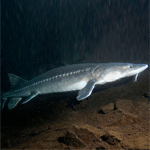
White Sturgeon
Acipenser transmontanus
Physical Characteristics
Length 200 cm (avg) / 610 cm (max)
Weight 100 kg (avg) / 816 kg (max)
Habitat & Geography
Bodies of water:
Common Regions:
Behavior & Diet
Primary Diet:
Angling Information
Best Baits / Lures:
Methods & Techniques:
Best Fishing Season:
Classification:
Phylum: Chordata (Chordate)
Class: Ray-finned fish
Order: Acipenseriformes
Family: Acipenseridae
Brief description
The White Sturgeon (Acipenser transmontanus) is an anadromous species: it spends much of its life in estuarine and marine waters, migrating into rivers to spawn. It is the largest sturgeon in North America and among the largest freshwater-associated fishes, though not strictly freshwater.
Community Posts
Number of imageposts of this species: 0
